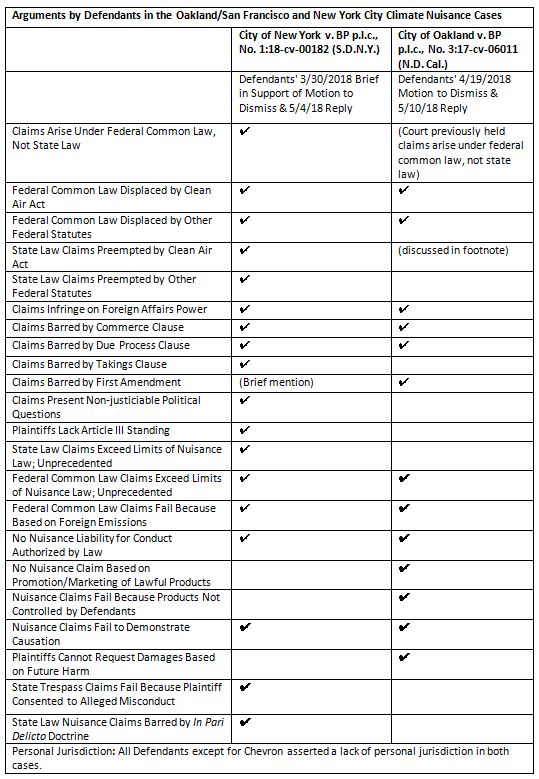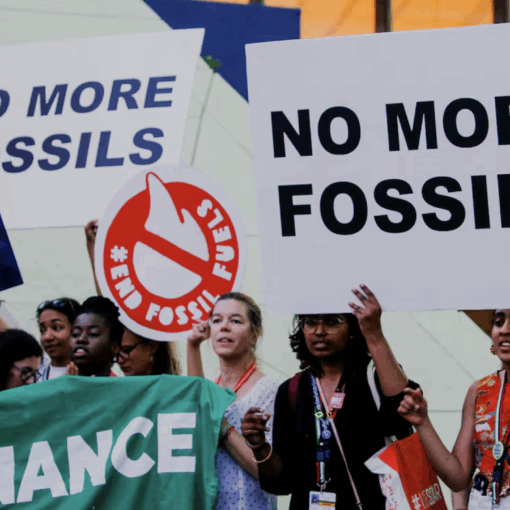The next week has the potential to bring important developments for international governance of marine carbon dioxide removal (CDR). That’s because the parties to the London Convention and London Protocol are meeting from October 28 to November 1 in London to discuss, among other things, governance of ocean alkalinity enhancement and ocean sinking of biomass (e.g. seaweed) for carbon storage. The parties are expected to consider a resolution, urging them to “act on a voluntary basis to” ensure that such activities only occur as part of a “legitimate scientific research” project, and to defer or not allow deployment. It is unclear if the parties will adopt the resolution. It is still in draft form and much of the wording is in square brackets, indicating that it has not yet been agreed amongst the parties. Even if the resolution is adopted, it would not be binding in the same way as a formal international agreement, but it could still impact how countries regulate marine CDR.
Background
Understanding the ramifications of this decision requires context and background. The Intergovernmental Panel on Climate Change has concluded that CDR will be needed, alongside deep emissions cuts, to limit global warming to 1.5 to 2oC in line with the goals of the Paris Agreement. Delayed action on emissions cuts may require even more (and more expensive) CDR – the 2024 United Nations Emissions Gap Report released this week found that 2023 greenhouse gas emissions set a new record, and current emissions reduction pledges for 2030 are insufficient to meet temperature goals.
A variety of CDR techniques are currently being explored and, in some cases, deployed. Some are land-based, while others use the ocean. Ocean-based approaches that are currently receiving attention include (1) ocean fertilization, (2) ocean alkalinity enhancement, and (3) seaweed cultivation and sinking. As noted in a 2021 National Academies of Sciences (NAS) report, these approaches have the potential for substantial carbon sequestration, but key questions remain about their efficacy, benefits, and risks. In order to answer these questions, further research, including in-ocean research, is needed. But in-ocean research could implicate various international and domestic laws that might affect whether, when, where, and how projects take place.
Marine CDR Governance under the London Convention and Protocol
Two key international laws applicable to certain forms of marine CDR are the 1972 Convention on the Prevention of Marine Pollution by Dumping of Wastes and Other Matter (London Convention) and the 1996 Protocol to the Convention (London Protocol). Both the London Convention and London Protocol aim to limit ocean dumping. The London Protocol, agreed to 20 years after the London Convention, was intended to update and eventually replace the London Convention. However, before that can happen, all of the countries that are party to the London Convention must ratify the London Protocol. Many haven’t yet done so. The U.S., for example, is a party to the London Convention but has not yet ratified the London Protocol.
Both the London Convention and London Protocol require parties to adopt domestic laws to regulate the “dumping” of “waste and other matter” at sea. Dumping is defined broadly to mean “the deliberate disposal of waste or other matter at sea from vessels, aircraft, platforms, or other manmade structures.” In both agreements, the definition of “dumping” excludes the “placement of matter for a purpose other than mere disposal thereof, provided that such placement is not contrary to the aims of” of the agreements. Legal scholars have long debated whether and when marine CDR activities fit into the definition of “dumping,” whether they qualify for the “placement” exemption, and whether marine CDR activities are contrary to the aims of the agreements (see here for example).
Parties to the London Convention and Protocol have sought to provide clarity on these issues through a series of resolutions adopted over the last 16 years. First, in 2008, the parties adopted a resolution dealing specifically with ocean fertilization. The resolution stated that ocean fertilization projects involving “legitimate scientific research” “should be regarded as placement of matter for a purpose other than mere disposal,” and thus not be classed as dumping, provided they are “not contrary to the aims of the” the London Convention and Protocol. The parties subsequently, in 2010, adopted a framework for assessing research projects. The framework sets out criteria for evaluating whether a project qualifies as “legitimate scientific research,” including a requirement that “economic interests should not influence the design, conduct and/or outcomes of the [research]. There should not be any financial and/or economic gain arising directly from the experiment or its outcomes.” The 2010 framework further states that, even if a project is found to involve legitimate scientific research, countries “should” only conclude that the project is not contrary to the aims of the London Convention and Protocol, and thus not treat it as dumping, if “conditions are in place to ensure that . . . environmental disturbance would be minimized and the scientific benefits maximized.”
The 2008 resolution and 2010 assessment framework are not legally binding. But, in 2013, the parties to the London Protocol adopted an amendment that is intended to be. The amendment deals with the “placement of matter into the sea” for the purpose of “marine geoengineering,” which the parties defined to mean:
“a deliberate intervention in the marine environment to manipulate natural processes, including to counteract anthropogenic climate change and/or its impacts, and that has the potential to result in deleterious effects, especially where those effects may be widespread, long lasting or severe.”
The amendment requires parties to the London Protocol to prohibit “the placement of matter into the sea” in connection with listed marine geoengineering activities “unless the listing provides that the activity . . . may be authorized under a permit.” Only ocean fertilization has been listed so far. The listing only allows for the issuance of permits for ocean fertilization research (not deployment) and only if certain requirements are met. Some in the marine CDR community have expressed concern that the requirements are difficult to meet and thus could hinder needed research. Particular concerns have been expressed about the requirement that research not result in any “financial and/or economic gain,” with some arguing that this could prevent privately-funded research that is intended to advance commercial interests.
The 2013 amendment has not yet entered into force. For that to happen, it must be ratified by two-thirds of the parties to the London Protocol. That seems unlikely in the near future given that, in the 10 years since the amendment was adopted, only six of the 55 parties to the London Protocol have ratified it. Moreover, even if (or when) the amendment does enter into force, it will only be legally binding on London Protocol parties. Countries, like the U.S., that are only party to the London Convention won’t be legally bound by the amendment. Nor will countries that have failed to sign-onto either agreement. The amendment might still influence their actions, however.
Recent Developments under the London Convention and Protocol
At their last meeting in October 2023, parties to the London Convention and Protocol considered options to advance governance of marine geoengineering. They focused specifically on two marine CDR approaches—ocean alkalinity enhancement and biomass cultivation for carbon removal (including seaweed cultivation and sinking) —and two solar radiation management techniques—marine cloud brightening and surface albedo enhancement. (Solar radiation management is distinct from CDR. Whereas CDR aims to mitigate climate change by removing and durably store carbon dioxide from the atmosphere, solar radiation management techniques seek to lessen the impacts of climate change by reflecting solar radiation into outer space.)
In 2022, the parties agreed to evaluate those four approaches, and how they should be governed. As part of that effort, the parties requested scientific expertise from a Joint Group of Experts on the Scientific Aspects of Marine Environmental Protection (GESAMP) Working Group 41, which is working on scientific analysis of the approaches (a report is expected next year). Also as part of the effort, in 2022, the parties established the Legal Intersessional Correspondence Group (LICG) on Marine Geoengineering. LICG has been meeting regularly to advance governance discussions. One issue the LICG has explored is whether the 2013 London Protocol amendment can and should be expanded to apply to a broader range of marine geoengineering activities. (As noted above, currently the amendment only applies to ocean fertilization, but additional activities could be listed under the amendment in the future.)
While GESAMP and LICG continue their work, the parties have taken some initial steps to clarify their thinking on marine geoengineering governance. At the 2023 meeting, the parties adopted a “Statement on Marine Geoengineering,” in which they concluded that “there is considerable uncertainty regarding [all four techniques’] effects on the marine environment, human health and on other uses of the ocean.” However, in the parties view, “each of the four . . . techniques . . . has the potential for deleterious effects that are widespread, long-lasting or severe.” Given this, the parties determined that use of the techniques, other than in connection with “legitimate scientific research, should be deferred.”
The parties also endorsed the 2010 assessment framework as the appropriate frame for evaluating legitimate scientific research, writing:
“The governing bodies are of the view that the requirements set out in the [2010] Assessment Framework for Scientific Research Involving Ocean Fertilization . . . form the appropriate basis for the assessment of proposed research and development projects relating to marine geoengineering, and strongly encourage the[] application thereof.”
What’s next? Options Before the Parties
In the lead-up to next week’s meeting of the parties to the London Convention and Protocol, the LICG issued a number of progress reports and updates on its work in early August. The reports outline different actions that the parties might wish to consider to advance the governance of marine geoengineering.
Amend the 2013 amendment to the London Protocol on marine geoengineering
The first option on the table is for the parties to list additional marine geoengineering activities under the 2013 London Protocol Amendment. As noted above, currently, only ocean fertilization is listed, and the listing provides that only research projects may move forward. As previously reported on this blog, last year, the LICG concluded that other marine CDR approaches (including several forms of ocean alkalinity enhancement and biomass sinking) may be eligible for listing under the amendment. Listing additional activities would mean that, if / when the 2013 Amendment enters into force, it would provide a legally binding framework for regulating those activities. Questions have, however, been raised about the viability of listing additional activities.
First, the 2013 amendment has not yet entered into force, as it has only been adopted by six London Protocol Parties. As the LICG has noted, it may take considerable time for the amendment to enter into force. Second, there are questions as to the legal permissibility of amending the 2013 amendment before it enters into force, although the LICG has concluded that parties likely do have authority to add new categories of activities to the amendment now. Third, even if it is expanded and does enter into force, the amendment would not bind parties not yet party to the London Protocol (like the U.S.).
Adopt a new proposed resolution on marine geoengineering
Given the concerns described above, the LICG has floated an alternative course of action. It has suggested that the parties consider adopting a resolution on marine geoengineering and provided draft text for discussion at the upcoming meeting. The draft is similar to the 2008 resolution on ocean fertilization but would apply to other marine CDR and solar radiation management activities. Notably, it would not in any way change the text of the London Convention or Protocol, or the 2013 amendment. It would be a stand-alone document that explains the parties’ thinking as to how those instruments might apply to marine CDR and solar radiation management activities.
The draft resolution suggests that ocean alkalinity enhancement, biomass sinking, and other covered activities conducted “for legitimate scientific research” purposes should be evaluated on a case-by-case basis under the assessment framework developed for ocean fertilization. If the requirements set out in the framework are met, research projects may go ahead, but deployment should be restricted. Exactly what form that restriction would take remains unclear. The draft states:
“given the present state of knowledge, any activities involving the [applicable] marine geoengineering activities . . . other than legitimate scientific research, [should not be allowed / should be deferred].”
The square brackets indicate that the text has not yet been agreed.
This resolution, like the 2008 resolution and 2010 assessment framework, would not be legally binding. Like those other instruments, it uses soft language (e.g., merely “recommending” that parties act in a certain way), and expressly states that countries will “act voluntarily / on a voluntary basis in line with the … suggestions” contained therein.
Even so, adoption of the resolution may have an impact on domestic regulation of these activities, as a statement of intent of the way the international community views the activities. Further, it would draw a parallel between international governance of ocean fertilization on the one hand, and ocean alkalinity enhancement and biomass sinking on the other.
Adopt a different resolution or take no action
It remains to be seen whether the parties will move forward with either of these options. As noted, the resolution is still in draft form and is yet to be discussed by the parties. Discussions over the next week could lead to considerable changes to the proposed text or proposal of an entirely new resolution . Alternatively, the parties might decide to take no action at this meeting, and instead spend additional time evaluating their options, especially given ongoing work by scientific and legal groups (like GESAMP and LICG) that could inform their approach. Regardless, the path taken by the parties over the next week is likely to be watched closely by those within the marine CDR community, and many outside it.






